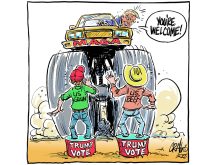Guebert is an agricultural journalist based in Illinois.
While most farmers and ranchers spent February focused on rising futures and cash grain prices, the U.S. Department of Agriculture churned out facts, figures and reports that received scant notice. USDA’s data, however, contained critical insight to 2007 and beyond and raised important points for policy makers to ponder.
The most detailed and interesting numbers arrived Feb. 14: USDA’s Agricultural Projections to 2016, an annual publication of 10-year estimates (but not official forecasts) of acres, income and prices served up by the department’s Economic Research Service.
Read Also

Finding the sweet spot where ag science meets ag culture
Soon, many will look at practices such as seeding marginal acres to forage, growing cover crops and livestock integration and ask why they didn’t do this sooner.
Because the report’s decade-long estimates cannot possibly predict 10 years of changes in weather, economics or policy, its out-year numbers are little more than guesses. Its near-year numbers, however, contain some remarkable projections.
For example, USDA on Feb. 14 guessed 2007 corn acres at 86 million, or 7.4 million more than 2006’s planted acreage. And 4.6 million of that boost, ERS projected, comes at the expense of soybeans Â- 75.6 million acres in 2006, 71 million in 2007.
Anyone with any inkling of today’s corn market dynamics would say both those numbers are far too light. Everyone expects more corn and less beans than USDA.
Turns out, so does USDA.
On March 1, chief economist Keith Collins, in an address at USDA’s outlook conference, tacked another million acres onto the Feb. 14 number. Officially, USDA now foresees 2007 corn acres at 87 million, the most since 1946.
Big acres and good weather means a big crop; USDA estimates 12.2 billion bushels will be harvested this fall, making 2007’s crop a record. (Got storage?)
But that huge supply, according to USDA, will still fall 300 million bu. short of demand.
As such, Collins guesses 2007 corn crop prices could average $3.60 a bu., another record, or 40 cents more than 2006’s estimated average price.
The 10-year forecast also contains some unbelievably low corn stock carryovers for the coming years. For instance, USDA pegs carryover – the amount of corn left in storage each Aug. 31 – this year at 935 million bu. or, given daily usage, about 30 days’ supply.
On Aug. 31, 2008, though, corn carryover from this year’s anticipated record production will fall to but 19 days’ usage. In 2009, carryover will drop to 18 days; then to just 16 days in 2010.
If USDA is anywhere near correct, stocks-to-use ratios of five percent or less means three things.
First, $3 plus corn will be the price benchmark for years to come. USDA agrees; it sees corn price averages of $3.50 for 2007, $3.60 for 2008 and $3.75 for 2009.
Second, with near-zero carryovers, any planting, production or harvest hiccup will send feed, food and fuel prices skyrocketing at neck-breaking speeds.
And third, with stocks of America’s chief food and feed grain balanced on a pinhead, congressional aggies should at least discuss the possibility of including a modest (farmer-owned?) grain reserve in the 2007 farm bill to ensure domestic supply and stable prices.
That idea is even more necessary given the current grain export picture.
On March 1, secretary of agriculture Mike Johanns boasted, correctly, that 2007 ag exports would rise $9.3 billion over last year to give the U.S. its “fourth year of back-to-back (export) records. Two-thirds of this (2007) increase,” he continued, “is due to the grain and oilseed sectors.”
Odd, isn’t it, that after decades of export-directed, big crop-cheap grain farm bills that last year’s short corn crop and higher corn and soybean prices would deliver the all-time record.
As such, it’s clearly time for 2007 farm bill writers to put six feet of dirt over exports-are-everything farm programs of the past that have clobbered both farmers and taxpayers for years.














